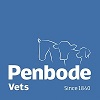Acupuncture
Acupuncture has been used for thousands of years to successfully treat both animals and humans. It is being used by an increasing number of vets as a complementary or adjunctive therapy. Acupuncture is the stimulation of specific points on the body with thin, sterile, single-use needles to assist healing, reduce pain and improve quality of life.
Chinese medicine uses acupuncture holistically to aid restoration of energy balance in the body by redirecting the flow of Qi along imaginary energy channels called meridians. The Western scientific approach, more commonly practised in the UK, uses needling predominantly to achieve pain relief in a wide variety of conditions. There is a lot of overlap between the two approaches.
How does acupuncture work?
Acupuncture is understood to work on three levels:
1. Locally, needling releases muscle spasm, increases blood flow to an area, stimulating release of healing chemicals at the site of needle placement.
2. Segmentally, acupuncture needles, placed in the same spinal segment as the affected area, modify the pain signals travelling up to this area of the spinal cord, effectively blocking pain sensation.
3. Centrally, one of the responses to acupuncture is the release of neurotransmitters and hormones such as endorphins and serotonin in the brain. This enhances an animal’s general wellbeing and ability to cope with its problems.
The combined effect of acupuncture, acting at all three levels, often results in a good level of pain relief and improved quality of life.
When is acupuncture useful?
– As acupuncture is well tolerated by many pets, it can be considered whenever pain relief and improved mobility is the desired outcome.
– When there is disease or injury affecting one limb or a particular area of the spine, it results in altered posture and abnormal gait with resulting pain and tension in other areas of the body. Acupuncture alongside physiotherapy, hydrotherapy and massage helps redress the balance.
– It is used for arthritis and spinal disease.
– It can assist older animals with strength and mobility issues.
– It can be a cost effective way of providing long term pain relief, improving quality of life.
– Acupuncture is beneficial in supporting rehabilitation following major spinal and orthopaedic procedures, speeding healing, muscle building and improved range of movement.
– Some animals are unable to tolerate pain relief medication, acupuncture offers and alternative management tool.
– Acupuncture can always be considered as part of a multimodal approach to pain management.
WHAT IS INVOLVED?
What is involved?
Acupuncture is classed as an act of veterinary surgery, legally it is only a veterinary surgeon that can carry out acupuncture treatments.
– The first consultation will be longer 30-45 minutes to allow time to assess your pet and evaluate the best approach to its problems.
– Initially a course of acupuncture sessions, typically four, at roughly weekly intervals is required to get full benefit.
– Each treatment lasts about 20 minutes and owners are encouraged to stay with their pet as long as they are comfortable to do so.
– Single use, sterile Acupuncture needles are placed after assessment of the pet, most are very tolerant of acupuncture, often visibly relaxing during treatment.
– In chronic disease, like arthritis, most animals will require “top up” treatments as they deteriorate. Often a single treatment is effective in restoring mobility.
What is involved?
Acupuncture is classed as an act of veterinary surgery, legally it is only a veterinary surgeon that can carry out acupuncture treatments.
– The first consultation will be longer 30-45 minutes to allow time to assess your pet and evaluate the best approach to its problems.
– Initially a course of acupuncture sessions, typically four, at roughly weekly intervals is required to get full benefit.
– Each treatment lasts about 20 minutes and owners are encouraged to stay with their pet as long as they are comfortable to do so.
– Single use, sterile Acupuncture needles are placed after assessment of the pet, most are very tolerant of acupuncture, often visibly relaxing during treatment.
– In chronic disease, like arthritis, most animals will require “top up” treatments as they deteriorate. Often a single treatment is effective in restoring mobility.
Please note
There is a small percentage of animals, as people, that gain no benefit from acupuncture, reasons are not currently understood and this cannot be predicted. It’s unusual but if this is suspected a course will be terminated.
At Penbode Pet Vets Claire Davies, who has been a small animal vet here from 1992 uses complementary therapies alongside conventional practice on a regular basis. She is very happy to speak to you if think acupuncture might help your pet.
There is a small percentage of animals, as people, that gain no benefit from acupuncture, reasons are not currently understood and this cannot be predicted. It’s unusual but if this is suspected a course will be terminated.
At Penbode Pet Vets Claire Davies, who has been a small animal vet here from 1992 uses complementary therapies alongside conventional practice on a regular basis. She is very happy to speak to you if think acupuncture might help your pet.

